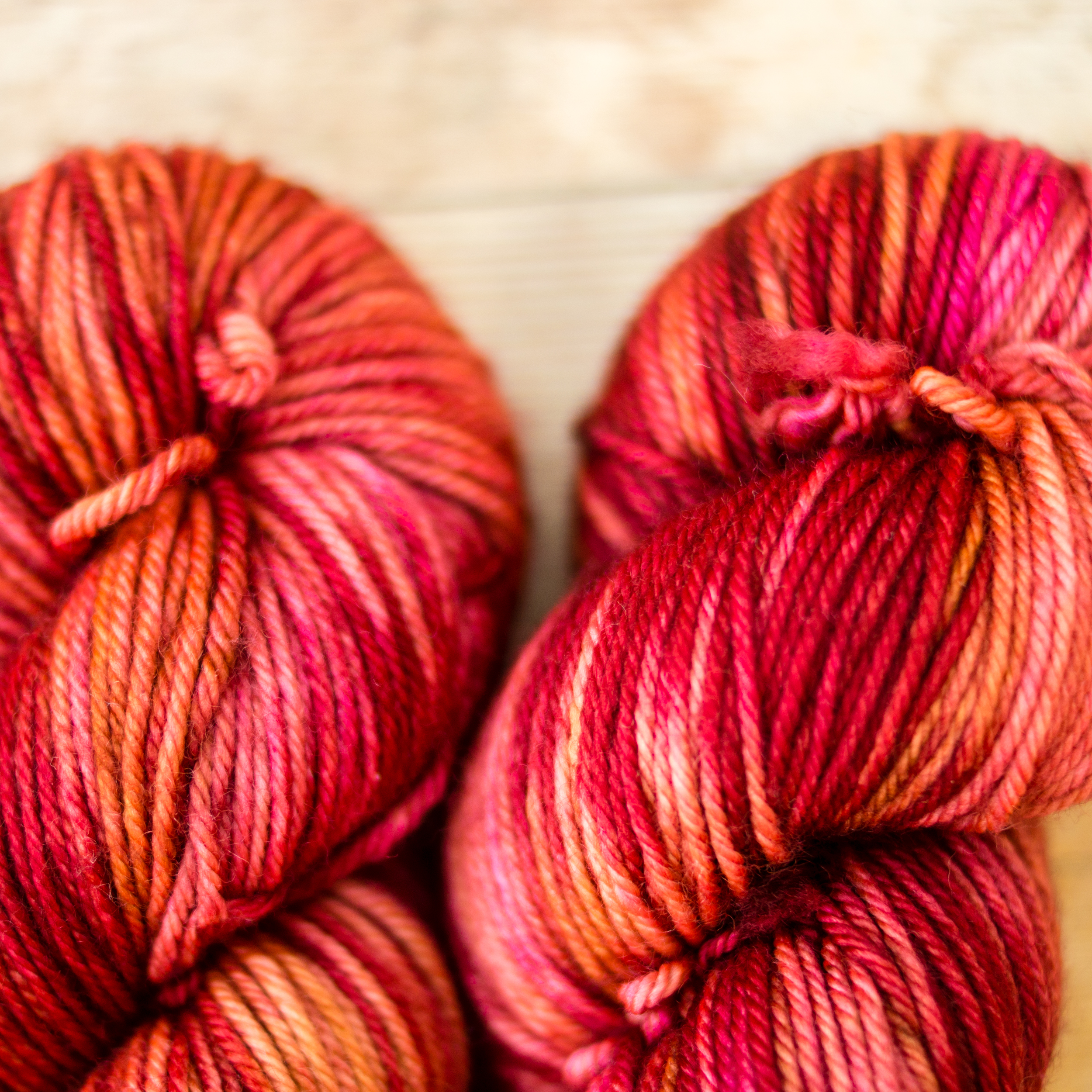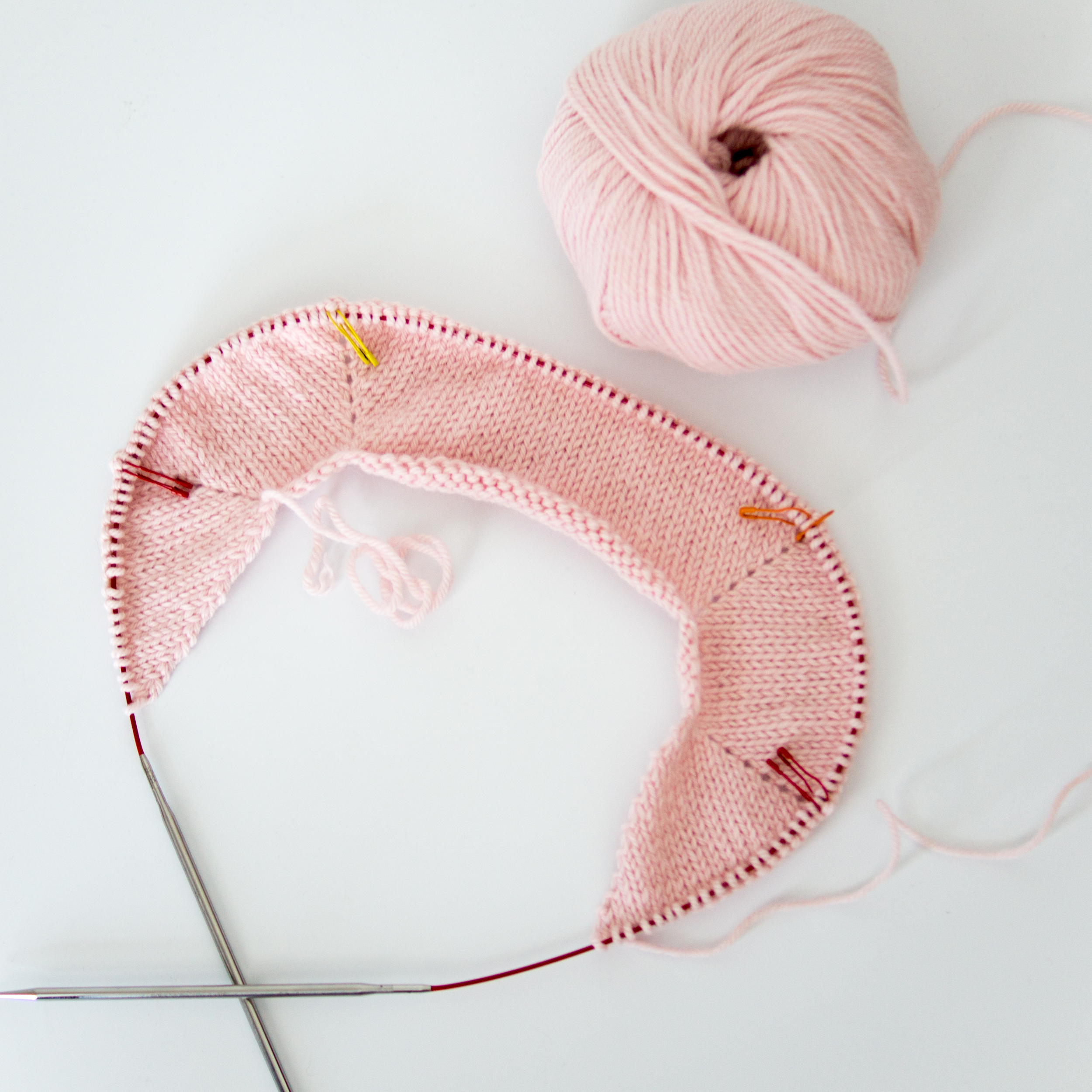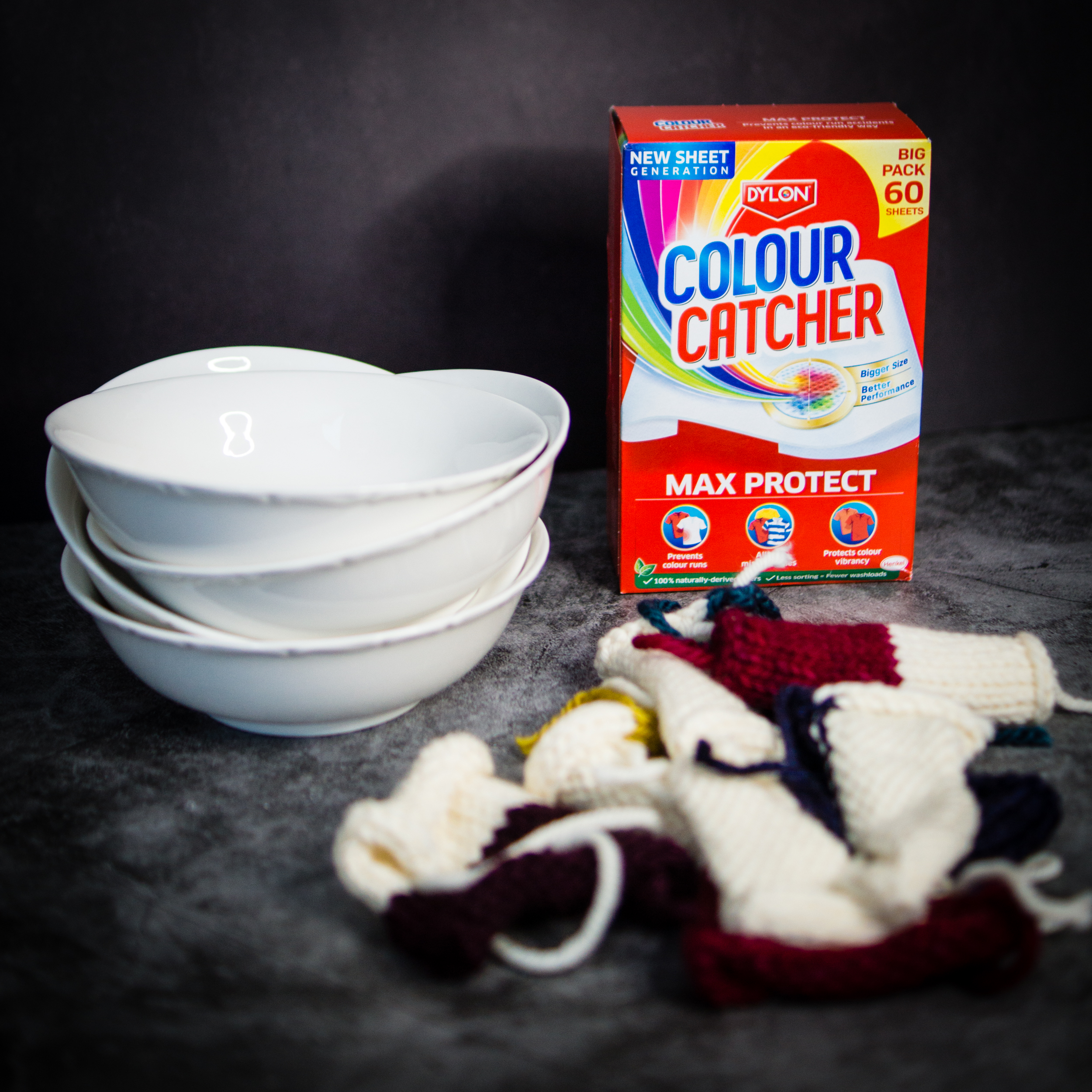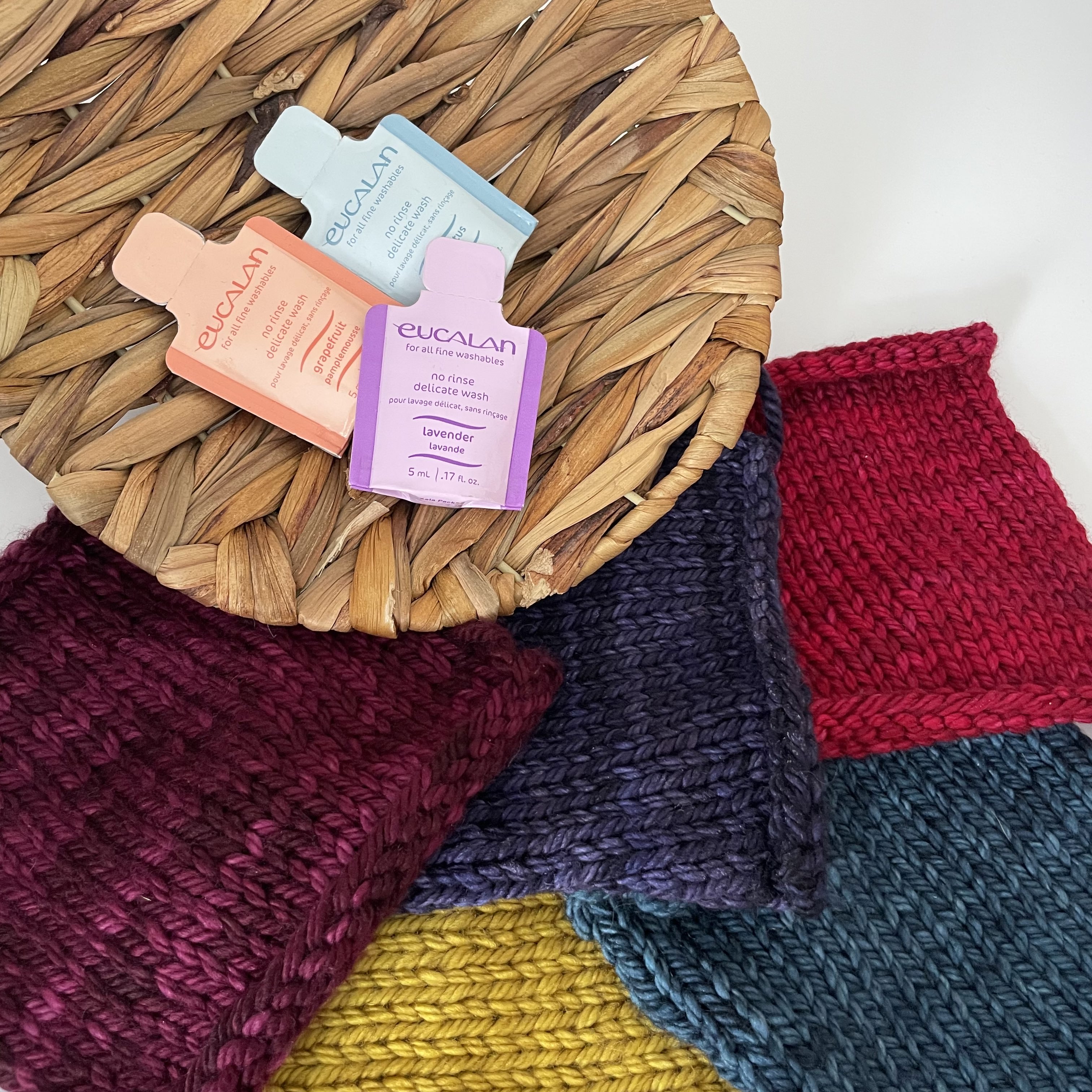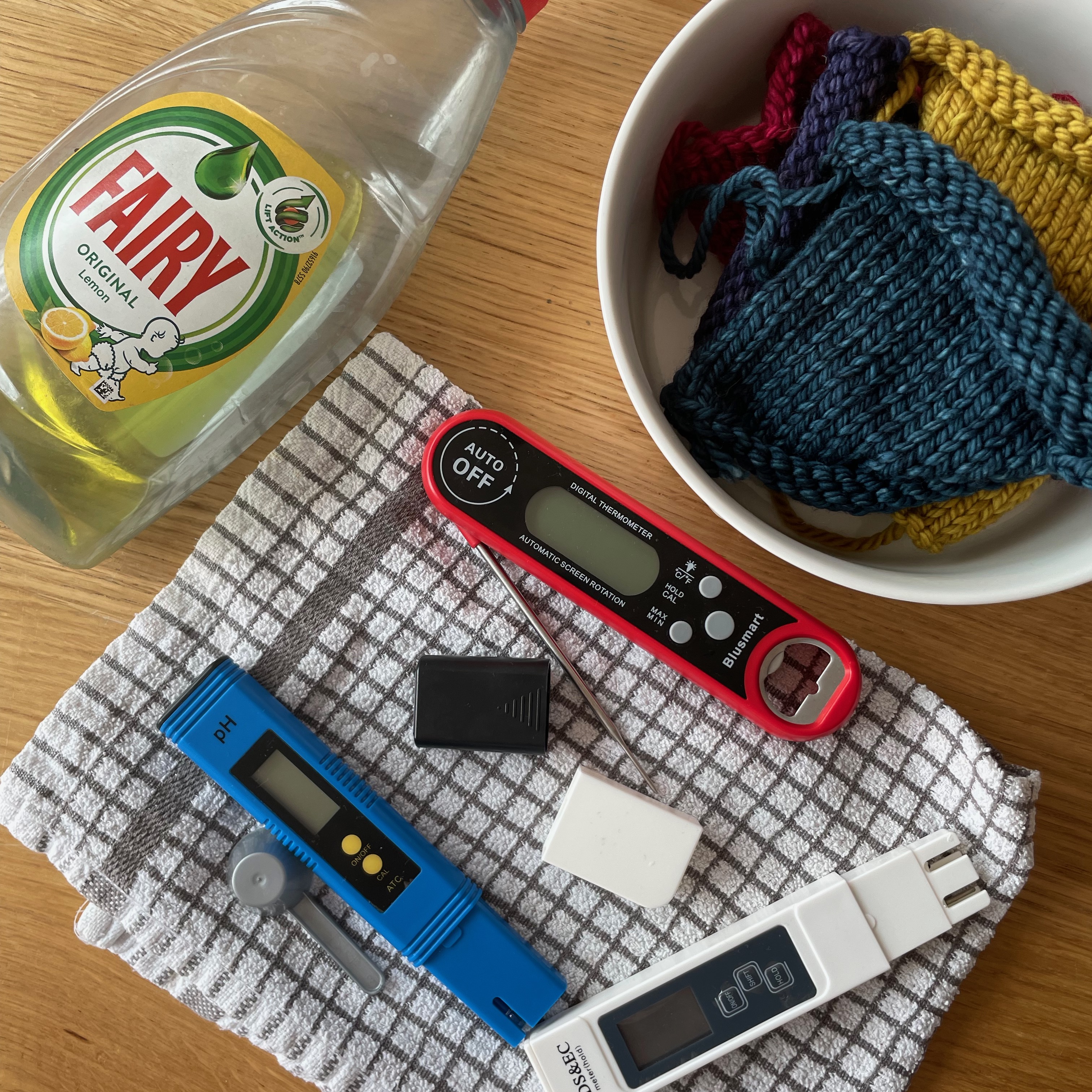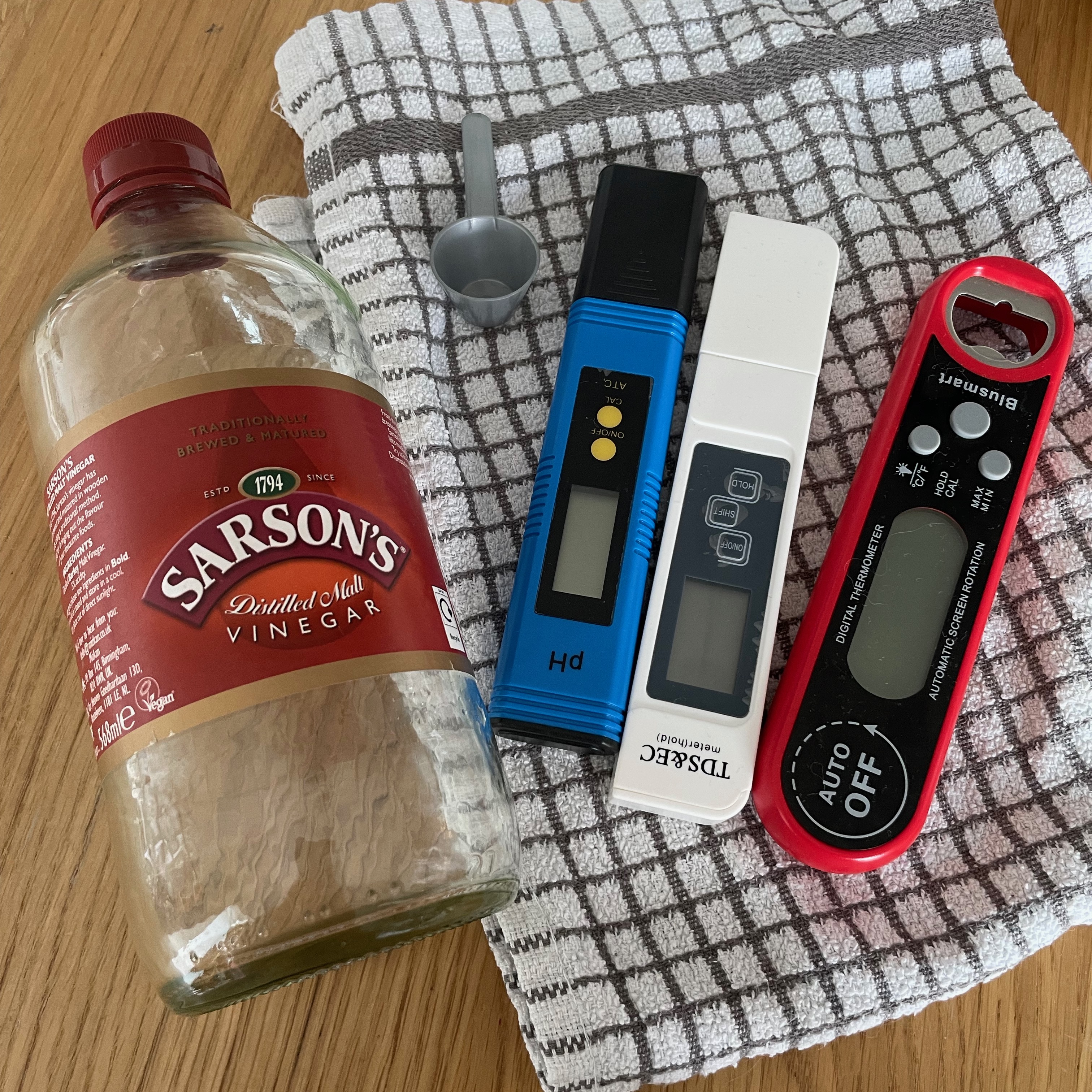Introduction
Anyone who’s ever done laundry knows that fabrics can bleed. New jeans, the famous red sock in a sea of white laundry, and – my favourite – hand dyed yarn. All these things can be the cause of frustration and heartache when dye ends up where it shouldn’t.
The Internet is a wonderful thing, and it’s host to a bunch of home remedies and commercial solutions to this problem. From throwing in a colour catcher to adding a scoop of white vinegar, there are plenty of options to choose from that promise to prevent the bleed.
But which of them actually work, and which don’t?
Then there’s the issue of temperature. When I asked on Twitter, you gave me a huge range of responses! Many of you described your wet blocking water as room temperature / body temperature, or thereabouts; some said as cool as you could comfortably manage; the spinners amongst you seemed to prefer hot water. But if all you want to do is bock your work, not give it a deep clean, and you’re worried about bleeding, which is best?
Sounds like it’s time for some science!
I’m going to test three temperature points, with 5 different colours of hand dyed yarn, to see how temperature alone affects yarn bleeding.
Depending on the results, one of these will be chosen as the control group.
Then, keeping the temperature the same, I’ll put 5 solutions to the test on 5 different colours of hand dyed yarn to try and answer the question of “does this actually work?”.
I’ll be as rigorous as possible in my scientific method, and I’ll write it up in both a casual and formal format, so you can read along however suits you.
Important Notes!
- I’m going to focus on merino wool dyed using acid dyes, simply because that’s what I use most of, and see most of from hand dyers. Even if it’s not your favourite, hopefully it’s something you’re familiar with.
- All hand dyed things bleed sometimes. It’s absolutely NOT a reflection on the skill or ability of a dyer! That’s why it’s so important for yarn lovers to know how to handle it.
Acid Dyeing 101
Much of the hand dyed yarn available is dyed using acid dyes, which are suitable for use on wool, silk, and nylon. These typically come in a powder form and are mixed with water to create liquid dye.
However, the dye alone is not sufficient to permanently bond the colour to the yarn. As the name implies, the dye bath must be acidic in order for the dye to work.
Here comes the science!
How Acid Dyes Work
Dyeing works because the dye particles bind to the positively charged protein in the yarn. Each protein has something called an isoelectric point, which is the pH at which a protein carries no net electrical charge and is neutral. Acid dyes work when the pH of the dye bath is below this point, as this causes the protein to carry a positive charge. Having a positive charge means that the dye can bond. (This is why different yarn bases take colours differently – the different fibres have different isoelectric points.)
This means adding an acid to the water. There are options here; I’ve tried dyeing at home and started off using white vinegar (acetic acid), then upgraded to citric acid. Both worked well for me, but I invested to avoid that vinegar smell. (It doesn’t linger on the yarn, but it does on my hands – yuck.)
The Effect of Heat
The last thing you need is heat. Now technically, it is possible to set dye without heat, but it would take an unreasonable amount of time. For example, attempting to dye yarn in 20C water would take 128 hours, whereas an equivalent dye at 100C would take around 30 minutes. [1]
In short, heat is a catalyst – something that speeds up a reaction. (Are you having flashbacks to science lessons? I am.)
Saturation & Bonding
Anecdotally, I know that the deep, dark tones I adore are most likely to bleed, and from my forays into dyeing and rudimentary chemistry, I know why. Creating those deep dark colours is achieved by, basically, using more dye. Yes there are pale colours and deep colours, but to get that super saturated look, you have to literally saturate the yarn with concentrated dye.
What that means is that there are more dye particles going on to the yarn than the yarn is capable of absorbing. There aren’t enough protein particles in the yarn to gather up every little dye particle, and that’s why the water doesn’t run clear.
The other thing is that these bonds aren’t forever. Chemistry is fickle; over time, in the right conditions, those bonds will un-bond, and a little colour will be lost. Molecules move, and that kind of movement is typically affected by… heat.
So actually, if we add heat to that situation and the dye was ready to bleed, we would potentially speed up the bleeding! Nightmare.
Recap
So to recap, there are three things we need to dye yarn: dye particles, acidity, and heat. (And the heat might actually speed up bleeding. Yikes!)
This experiment is intended to test first the temperature, then the things we can add to our blocking water; it is not intended to compare these additives to actually dyeing yarn. For that reason, all tests will be conducted with nothing hotter than warm water. Using high heat takes us into dyeing territory, and that is beyond the scope of this experiment.
Next Time
In Part 2, I’ll lay out how the experiment will be run. There’ll be the light reading version, but also a technical pdf you can download, if you want to get right into the nitty gritty with all the technical terms. Then it’ll be time to crack on!
Jump Links
Part 1: Introduction
Part 2: The Experiment
Part 3: Round One – Temperature
Part 4: Round Two – Wool Wash (Soak)
Part 5: Round Two – Wool Wash (Eucalan)
Part 6: Round Two – White Vinegar
Part 7: Round Two – Washing Up Liquid
Part 8: Round Three – Colour Catcher
Part 9: Results & Conclusion
Sources
[1] https://spinoffmagazine.com/dyeing-wool-temperature-effects-of-water

